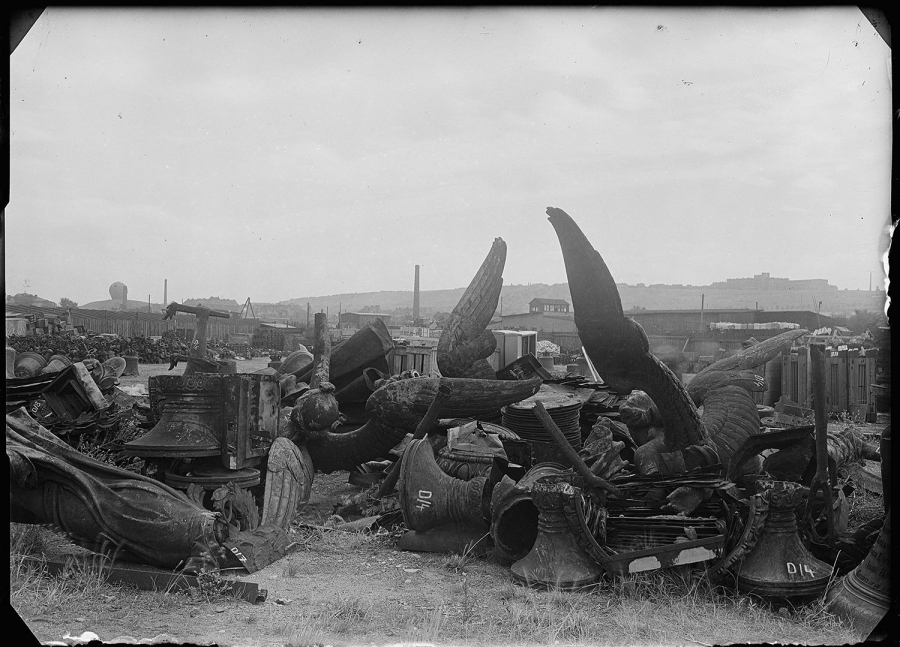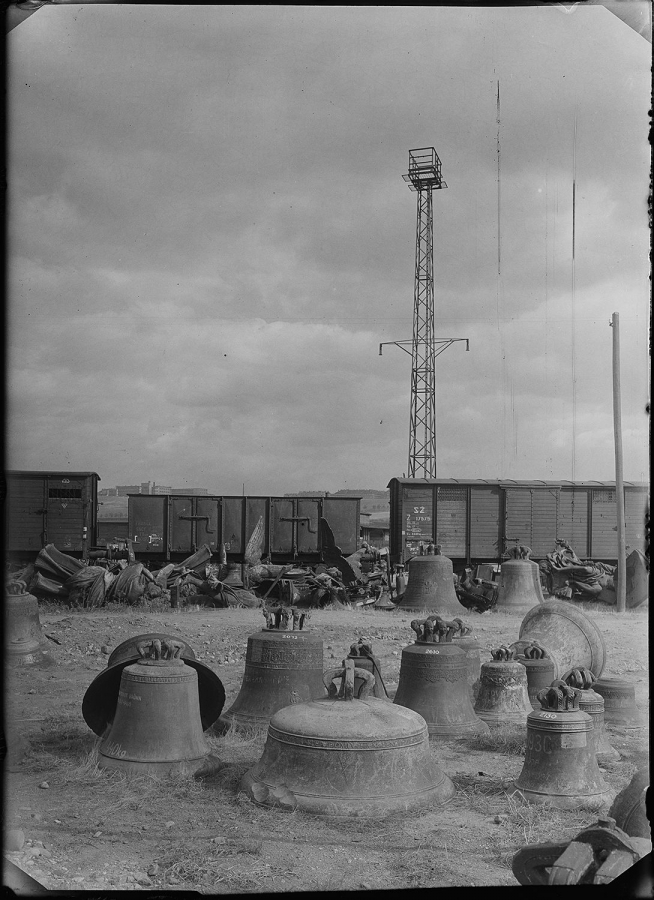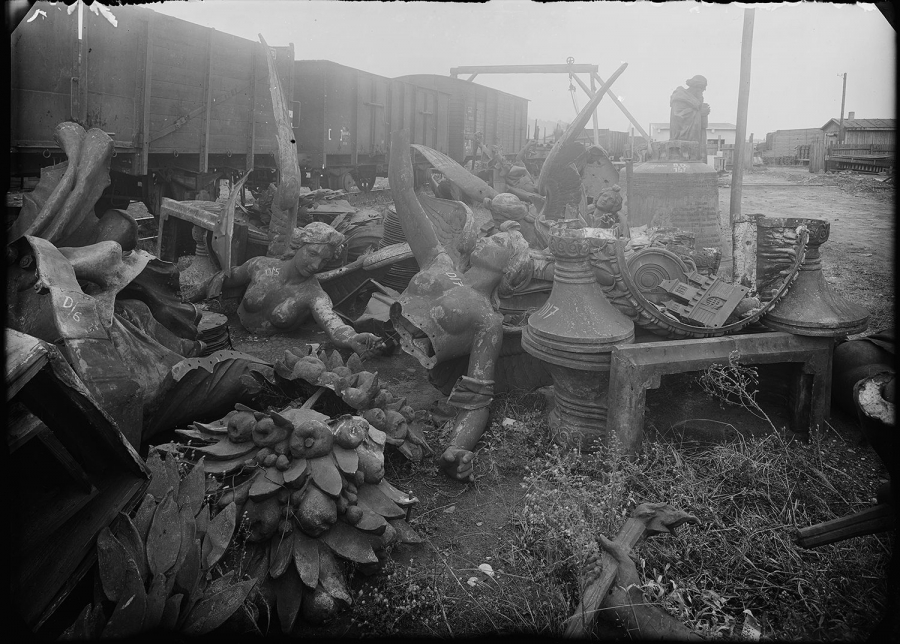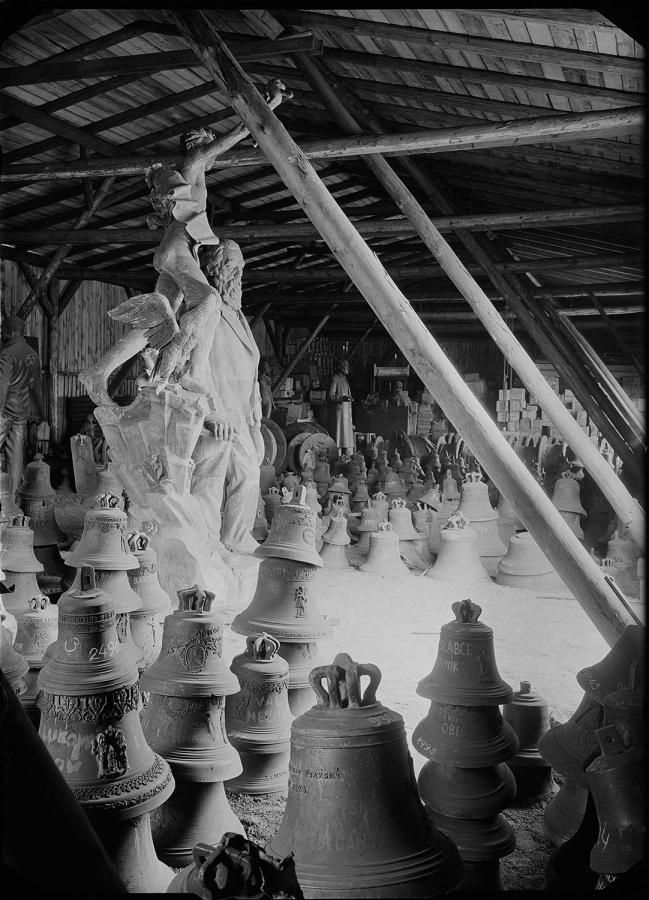Metal Depository at Maniny
In the area under the Libeň Bridge, at the railway station at Maniny in Holešovice harbour, a collection point was created in 1942 where all requisitioned metal, mainly church bells from the entire Protectorate, was gathered, as well as memorials, commemorative plaques or metal construction material.
After the war, Zdeněk Wirth described the situation of the salvaged metal at Maniny in the foreword to the 1946 Prague Calendar, accompanied by Sudek's photographs: “The most beautiful result was the dedication of some of the patriots who were ordered to carry out the transport of the requisitioned metal objects from the cemetery of bells and bronze sculptures at Maniny to foundries in northern Germany. In this way the colonels František and Vladimír Procházka and the storage administrator Josef Ptáčník saved 2 184 bells of B and C categories, including 287 from Prague and most of the bronze monumental statues and sculptures, busts, plates and plaques. […] It was a joyous surprise for the whole society when it became clear after the Prague revolution that precious sculptural works such as Myslbek's Rieger, Sucharda's Palacký, […] Štursa's Svatopluk Čech and Masaryk, […] and Myslbek's bust of Palacký […] were saved in final bronze casts. In addition to the bronzes, a number of stone sculptures were also saved from destruction; thus Šaloun's Rabbi Löw, and Sucharda's Palacký […] will take their places again.”
According to the surviving negatives, Sudek was primarily interested in sculptures while taking photographs at Maniny, for example of the monument of František Palacký by Stanislav Sucharda. The monument was supposed to be dismantled in 1942 based on a decision made by the occupation administration from the previous year.



